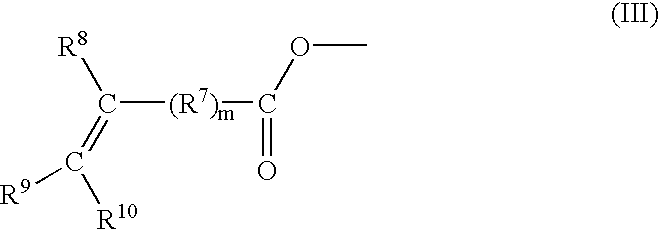Functionalized polyphenylene ether resins and curable compositions comprising them
a technology of polyphenylene ether and polyphenylene ether, which is applied in the field of functionalized polyphenylene ether resins and curable compositions comprising them, can solve the problems of lack of compatibility between ppe and many resins, lack of compatibility manifesting, poor physical properties, etc., and achieves the effects of increasing reactor utilization and productivity, increasing solids loading, and increasing solution viscosity
- Summary
- Abstract
- Description
- Claims
- Application Information
AI Technical Summary
Benefits of technology
Problems solved by technology
Method used
Image
Examples
Embodiment Construction
Polymerization Reaction
A typical laboratory reaction recipe and reaction conditions are provided.
The catalyst solution can be prepared by stirring 0.41 g of cuprous bromide and 10.9 g of di-n-butyl amine in 100 ml of toluene. The catalyst is transferred to a one liter stirred glass reactor equipped with an internal cooling coil and inlet tubes for oxygen and monomer. A rapid stream of oxygen is introduced near the bottom of the reactor and a solution of 70 g of 2,6-xylenol in 100 ml of toluene is added through a metering pump, over a period of fifteen minutes, to the rapidly stirred solution. The temperature is maintained initially at about 40.degree. C. to about 45.degree. C. / 48.degree. C. towards the end of the run by circulating water from a constant temperature bath through the cooling coil. Molecular weight build is continuously monitored with a typical reaction time to target I.V. of about 100-107 minutes.
In the glass reactor vessel, the copper catalyst was complexed by the ad...
PUM
| Property | Measurement | Unit |
|---|---|---|
| viscosity | aaaaa | aaaaa |
| temperatures | aaaaa | aaaaa |
| temperatures | aaaaa | aaaaa |
Abstract
Description
Claims
Application Information
 Login to View More
Login to View More - R&D
- Intellectual Property
- Life Sciences
- Materials
- Tech Scout
- Unparalleled Data Quality
- Higher Quality Content
- 60% Fewer Hallucinations
Browse by: Latest US Patents, China's latest patents, Technical Efficacy Thesaurus, Application Domain, Technology Topic, Popular Technical Reports.
© 2025 PatSnap. All rights reserved.Legal|Privacy policy|Modern Slavery Act Transparency Statement|Sitemap|About US| Contact US: help@patsnap.com



